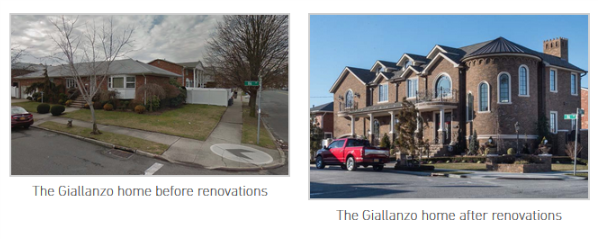The Sopranos’ McMansion is a key part of the original show. The new prequel movie might help explain how the family ended up in a New Jersey McMansion:

By the 1990s, the mob was operating out of detached villas with swimming pools in upstate New Jersey, but if you want to learn precisely why the adult Tony Soprano lives in a gilded McMansion rather than a clapboard house with a stoop in Newark like his mother’s, The Many Saints Of Newark has the answer.
As Harold’s fortunes rise, black families move onto the same streets as Italians, causing much angst to the latter, including Tony’s parents, Johnny Boy and Livia Soprano. It makes Tony’s racism that much more obvious when, 30 years later, his daughter, Meadow, brings home her mixed-race college boyfriend. “I think there was talk, back in the day, about ‘Were black people getting short shrift on The Sopranos?’” says Odom Jr. “Was our story being told? I think David had a desire this time to look at an arc that really didn’t get explored the first time, at how the two communities intertwined and where they butted up against each other.”
This sounds like a white flight story line: as the population of Newark changed, as more Black residents moved into what were exclusively white neighborhoods, white residents moved out. This happened in numerous cities across the United States (as my own research on religious groups in the Chicago area adds to). In The Sopranos, Tony and cronies make money off housing programs in the city.
At the same time, this narrative could say more about a general move to the suburbs and less about the specific move to the suburban McMansion at the heart of the show. Tony Soprano presumably used his wealth to purchase a big home in a quiet subdivision to hide his work and give his family an opportunity at a more normal suburban life. But, did he go straight from Newark to the suburban McMansion? Did his journey include a more modest suburban starter home or a suburban apartment (as it did for other characters on The Sopranos)? Did a young adult Tony Soprano make his moves from a suburban split-level or anonymous apartment off a major suburban road?
The housing path of Tony Soprano is not an inconsequential part of the story that is being developed here; it highlights his family history, his success, and his goals in life. If I see The Many Saints of Newark, I will be keeping an eye on the residences depicted within the film.




